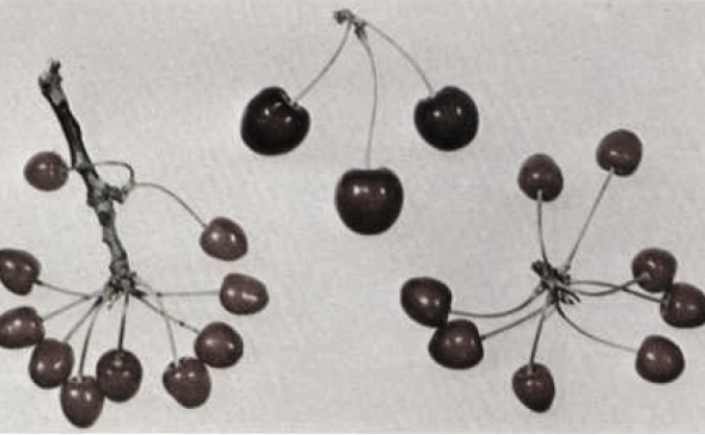While apples were the primary fruit grown in the Kootenays, cherry production ranked second by the mid-1920s. Cherries were a lucrative business. A producing orchard could provide a gross income of $1,050 per acre. 28
Kaslo, in particular, became renowned for its impeccable cherries and won first place “in London in 1909, at Wembley, England, in 1924, and a gold medal at the World’s Exhibition in San Francisco in 1916.”28
However, the arrival of the mysterious small cherry disease in 1933 decimated the Kootenay cherry industry. The disease was first spotted at “Mr. Heddle’s orchard on a bench above Willow Point on the West Arm of Kootenay Lake approximately ten kilometres (six miles) east of Nelson,” and by 1946 had infected orchards in every area throughout the Kootenay Valley.” 29
Contaminated fruit shrunk dramatically, “became angular and pointed, with three flat sides” (lost orchards) and lost its flavour and sweetness, making it no longer suitable for the fresh fruit market. Yet perhaps most devastating of all was that “disease-infected-trees only became obvious about two weeks before harvest.”
The consequences of Little Cherry disease were staggering. In 1920, the Kootenay district supplied two-thirds of the cherry crop in British Columbia. By 1955 only two percent of the sweet cherries grown in British Columbia came from the Kootenay region. 29
28. Lang, Lost Orchards, 73-74
29. Welwood, British Columbia Historical News, 15-18
